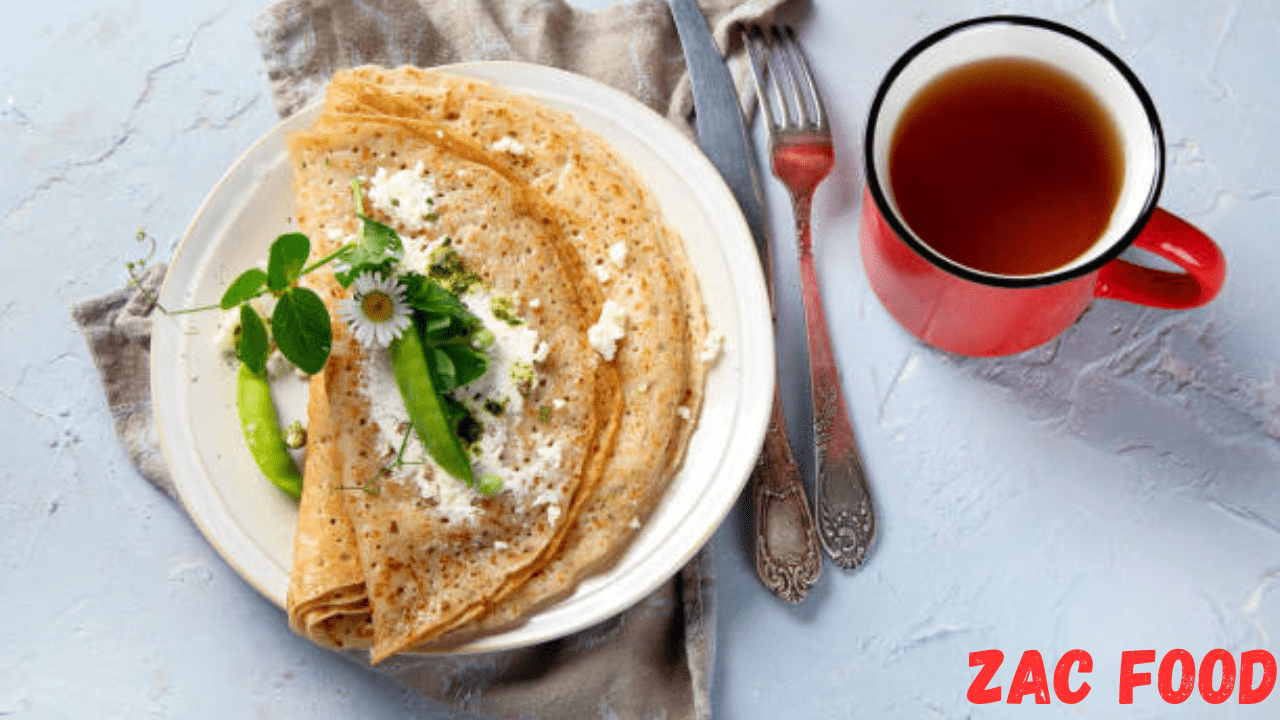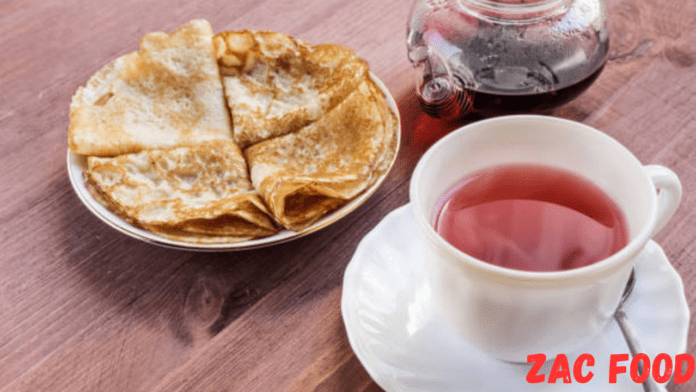Where Did the Trend Start?
The trend of tea and oily bread may feel like a new sensation, but its roots go back to traditional meals enjoyed in various parts of the world. Oily bread—typically bread that has been toasted or dipped in oil—is a long-standing culinary tradition in Mediterranean and Middle Eastern cultures. Countries like Turkey and Lebanon have enjoyed variations of oily bread for breakfast for centuries, often accompanied by tea or coffee.

In recent years, this humble pairing has made its way into the mainstream, particularly through the rise of social media. People from all walks of life are rediscovering the beauty of this simple combination, posting aesthetically pleasing photos of tea and oily bread, sparking curiosity and driving its popularity worldwide.
Why Is It Gaining Traction?
The rise of this comfort food duo can be attributed to several factors. First, the pandemic prompted people to seek comfort in food, leading to a surge in home cooking and simple, nostalgic dishes. Many found solace in tea and oily bread because of its ease of preparation and its calming qualities.
Second, social media has amplified the trend of tea and oily bread. Food influencers, bloggers, and everyday users have embraced the idea, sharing recipes and photos of the dish across platforms like Instagram and TikTok. This visual appeal—along with its relatively low cost and accessibility—has made it a favorite among food lovers.
What Exactly Is Oily Bread?
A Simple But Delicious Creation
Oily bread is, at its core, a simple dish, but simplicity doesn’t mean bland. Essentially, it involves taking a good-quality piece of bread and toasting or drizzling it with oil, such as olive oil, butter, or ghee. This can be enhanced with light toppings like herbs, spices, or even cheese.
Different cultures have their own versions of oily bread. In Mediterranean countries, olive oil is the most common choice, often sprinkled with herbs like thyme or rosemary. In Middle Eastern cuisine, flatbreads like pita or lavash are brushed with oil and sometimes toasted to crispy perfection. Each version of oily bread has its own unique twist, but the essence remains the same—delicious bread enriched by the flavor of quality oils.
The Role of Different Oils in Flavor
The type of oil you choose can significantly influence the flavor of the bread. For example:
- Olive oil offers a fruity, slightly bitter taste, making it ideal for those who enjoy a Mediterranean flavor.
- Butter or ghee provides a rich, creamy taste, enhancing the bread’s indulgent texture.
- Coconut oil gives a slightly sweet and tropical flavor, offering a unique twist to the traditional oily bread.
As the trend of tea and oily bread grows, more people are experimenting with different oils, giving the dish a new and exciting appeal each time.
The Tea Component: A Perfect Pairing
How Tea Complements Oily Bread
Tea is a natural companion to oily bread because of its simplicity and versatility. A warm, comforting cup of tea balances the richness of the oily bread, creating a satisfying experience. Whether you prefer a strong black tea or a light herbal infusion, the mild bitterness of tea cuts through the oiliness of the bread, providing a delightful contrast.
This pairing is not only about taste but also about the overall experience. The act of sipping hot tea while enjoying the texture and warmth of the bread evokes feelings of calm and contentment—making this duo a perfect comfort food choice.
Traditional vs. Modern Tea Pairings
In some cultures, traditional teas like black tea or mint tea have been paired with oily bread for centuries. Today, the trend of tea and oily bread has evolved to include modern tea options like chai lattes, matcha, and even exotic blends like hibiscus and oolong.
While black tea remains a classic choice, many enthusiasts are exploring more adventurous pairings. For example, pairing buttered bread with a chai latte adds a spicy warmth, while matcha offers a refreshing and slightly bitter contrast to oily bread. This flexibility in tea pairings makes the trend appealing to a wide range of tastes.
The Comfort Factor: Why Tea and Oily Bread Hit the Spot
Nostalgia and Simplicity
The trend of tea and oily bread taps into our collective love for simple, nostalgic foods. There’s something inherently comforting about a meal that requires few ingredients yet delivers maximum satisfaction. For many, oily bread and tea remind them of childhood meals or the traditional recipes passed down through generations.
During times of uncertainty, people often gravitate towards familiar and uncomplicated foods. Tea and oily bread offer that sense of nostalgia, creating a comforting experience without the complexity of modern, gourmet dishes.
Warmth and Texture: A Sensory Experience
Beyond the nostalgia, tea and oily bread engage the senses in a way that few other foods do. The warmth of the tea, the crunch or softness of the bread, and the rich taste of the oil all combine to create a multi-sensory experience.
The texture of the bread, whether it’s crispy or soft, soaked in oil or butter, adds to the sensory appeal. Paired with the warmth of the tea, it becomes a ritualistic experience, offering both physical and emotional comfort.
Health Benefits and Considerations
Healthier Oils and Whole Grain Breads
The trend of tea and oily bread doesn’t have to be an indulgence devoid of nutrition. By using healthier oils, like extra virgin olive oil, and opting for whole grain or gluten-free breads, this dish can become a nourishing snack or meal.
Whole grain bread provides fiber and nutrients, while high-quality oils like olive oil contain healthy fats and antioxidants. This makes oily bread a surprisingly nutritious option when prepared mindfully.
Potential Concerns with Oily Bread
While tea and oily bread can be part of a healthy diet, moderation is key. Too much oil, particularly if it’s not a high-quality variety, can lead to excessive calorie intake. Similarly, overly processed white bread lacks the nutritional benefits of whole grain options.
It’s important to strike a balance and enjoy this comfort food in moderation, ensuring that the indulgence remains a healthy part of your lifestyle.
How to Make Tea and Oily Bread at Home
Basic Recipe for Beginners
Making your own oily bread at home is easy and requires just a few ingredients. Here’s a simple recipe:
- Choose your bread (whole grain, sourdough, or flatbread).
- Lightly toast the bread or warm it on a pan.
- Drizzle with extra virgin olive oil, butter, or your preferred oil.
- Add a pinch of salt or herbs for extra flavor.
- Brew a fresh cup of tea (black, green, or herbal).
Enjoy this simple, yet satisfying dish with a steaming cup of tea, embracing the trend of tea and oily bread right from your kitchen.
Creative Twists to Try
For those looking to elevate their tea and oily bread experience, try experimenting with toppings like garlic, rosemary, or even a sprinkle of cheese. Pair different types of bread and oils to discover new flavors.
You can also try unique tea pairings, like spicy chai with garlic buttered bread or a floral jasmine tea with coconut oil bread. The possibilities are endless!
Social and Cultural Impact of the Trend
A Trend Rooted in Tradition
The trend of tea and oily bread is more than just a viral sensation—it’s deeply rooted in tradition. Countries like Greece, Turkey, and Italy have long enjoyed variations of oily bread and tea as part of their culinary heritage. What’s new is how this traditional combination has now gone global, capturing the attention of modern food lovers.
Social Media: The Viral Impact
Thanks to social media, the trend of tea and oily bread has reached new heights. Platforms like Instagram and TikTok are filled with posts showcasing beautifully plated oily bread alongside steaming cups of tea. Influencers and food bloggers have helped fuel the craze, making this simple dish a worldwide phenomenon.
Read More: Stay Fit and Satisfied: The Ultimate Guide to Healthy Ninja Creami Creations
FAQs
Question: What is the trend in tea consumption?
Answer: Tea consumption trends include growing interest in herbal, organic, and specialty teas, driven by wellness and sustainability.
Question: What are the tea flavor trends?
Answer: Popular tea flavors include chai, matcha, fruit-infused teas, and exotic blends like turmeric or hibiscus, reflecting health-conscious choices.
Question: What is the oily film on top of tea?
Answer: The oily film on tea often comes from natural oils in the tea leaves or added flavorings, like spices.
Question: Why do people dip bread in tea?
Answer: Dipping bread in tea softens the bread and enhances flavor, creating a comforting and nostalgic eating experience.
Conclusion: Is Tea and Oily Bread Here to Stay?
The trend of tea and oily bread combines simplicity, tradition, and comfort in a way that resonates with today’s fast-paced world. Its rise to popularity shows no signs of slowing down, as people continue to seek out comforting, easy-to-make meals that bring them joy. Whether enjoyed as a nostalgic treat or a new culinary discovery, tea and oily bread offer the perfect combination of flavor, warmth, and satisfaction.

